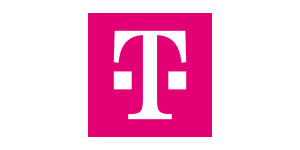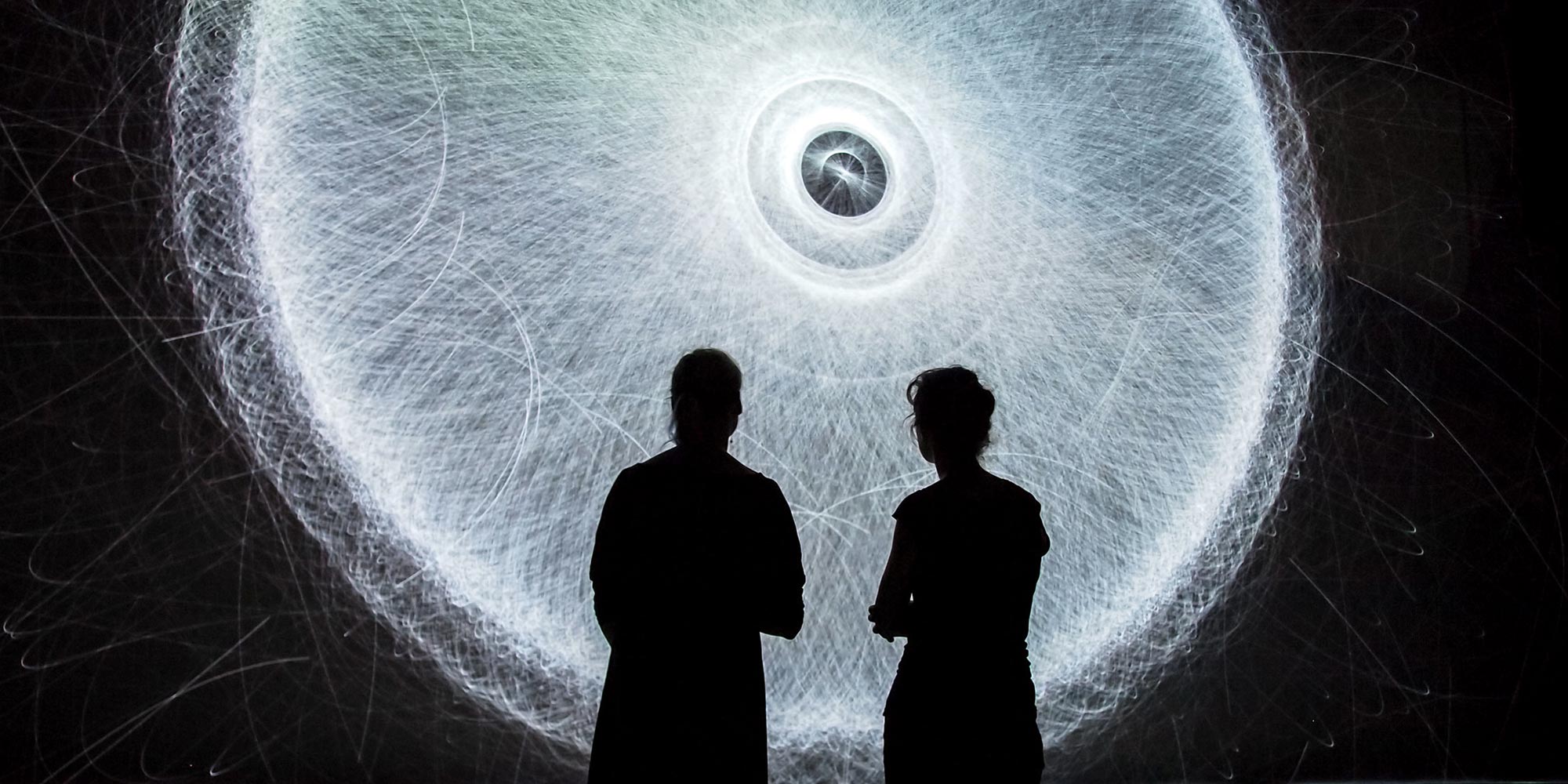In keeping with the focus of Art Collection Deutsche Telekom on contemporary art from Eastern Europe, the new residency will be dedicated to artists from / or who stand in relation to this region, who work at the interface between art, technology and science and who are particularly interested in researching the social impact of technological developments.
This new artists-in-residence program aims to foster interaction between international artists, researchers and scientists and Eastern European partners from research or industry. This program is intended to create a space for encounters in which artistic practice and scientific research can be combined in the best possible way….
“Life is for Sharing” –this is who we are, and this is what we stand for. We will not stand for hate or isolationism. Instead, our networks create connections between people. They overcome boundaries. They promote sharing. And they contribute to the creation of communities.
Timotheus Höttges, Chief Executive Officer (CEO), Deutsche Telekom AG
The residence is divided into two parts
For the selected artistic concept, unless it was submitted jointly or with reference to an academic partner, a scientific mentor/an academic partner institution will be sought and proposed. The aim of the first part is to elaborate the concept for the artistic research work in detail and to sharpen the artistic/scientific question behind the work. The scientific mentoring process should be completed within 6-8 weeks.
The second part of the residency will take place in Linz at Ars Electronica, where the artist will be able to produce the work. Questions regarding implementation can be dealt together and in dialogue with knowledge carriers from the Ars Electronica Futurelab and the Ars Electronica Archive. The work is to be created within 3-6 weeks in Linz.
The artistic and scholarly debate will be accompanied by a residency blog that transparently documents the various steps involved in the creation of an artistic/scientific work and discusses the challenges and questions posed by the process. In this way the public will be included in the discussion and the process of the work.
The finished work will be presented at the Ars Electronica Festival in Linz.
What we are calling for?
We are calling for artistic concepts for objects or installations, processes and artefacts, performances, screenings or interventions coming from in the following areas like Interactive Art, BioArt, Hybrid Art, AI & Life Sciences, Sound Art, Net Art, Digital Communities, Participatory Art/Crowd Art, Artistic Platform Projects, Art Activism and many more. However, the aim of the artwork should be to critically question technological developments including technological tools but not limited to it.
Objectives / Keywords
- The network as a lifeline
- Digital Democracy
- Transformation of society
- Artistic Intelligence vs. Artificial Intelligence
- Artistic Research
- Sustainability
- Humanism
- Social Responsibility
The Residency
The residency is split between selected scientific partners in Eastern Europe and other countries, and the Ars Electronica in Linz, Austria. The residency is a fully funded opportunity for an artist, designer or artists’ collective to create new dimensions in their artistic practice through their encounters with the scientific and corporate world. In addition the residency offers an opportunity to showcase prototypes at Ars Electronica Festival as well as to communicate the work internationally via the channels of Ars Electronica as well as of Deutsche Telekom.
Residency Structure
Part One: a period of 4-8 weeks in first half of 2021 as scientific mentoring process
Part Two: a production residency for a period of about one month at the Ars Electronica Linz until latest end of August 2021.
Part Three: public presentation at the end of the residency at Ars Electronica Festival 2021.
Benefits
The selected artist wins a residency consisting of €15,500 artist fee and production cost*. The fee structure is:
€3,000 artist fee
€10,000 production costs for which a proposal is required.
Up to €2,500 travel, accommodation and subsistence, including: travels to scientific partner, 1 travel to Ars Electronica as well as accommodation in Linz for 4-6 weeks
Support from Ars Electronica staff and Ars Electronica Festival.
*In case the winning party is an artist duo or artist group the artist fee, production costs as well as travel and accommodation costs need to be split between the members.
Submission Details
To participate in the ArtScience Residency Program, you must register online and submit all mandatory information online. The submission has to be made in English. The invited call is open for artists (above the age of 18) from all countries in Eastern and South Eastern Europe (Albania, Armenia, Azerbaijan, Belarus, Bosnia and Herzegovina, Bulgaria, Croatia, Cyprus, Czech Republic, Estonia, Georgia, Greece, Hungary, Latvia, Lithuania, Moldova, Montenegro, North Macedonia, Poland, Romania, Russia, Serbia, Slovakia, Slovenia and Ukraine).
Originality: The proposal needs to be for original work that demonstrably breaks new ground. That said, the proposed work can be entirely new, or can be an extension of an ongoing body of work. An entry confirmation will be sent out via e-mail as soon as all required documentation has been received.
A submission is complete and formally entered in the competition only if all information has been entered online and the submission has been finalized online. Employees of Ars Electronica Linz GmbH & Co KG, Art Collection Deutsche Telekom and staff members of organizations related to the call, as well as the competition’s jurors are ineligible to participate.
The submission should be sent via email to the following address artscience-residency@ars.electronica.art
The following documents are required:
- A short personal testimony video in which the artist explains why they are applying for the residency (Up to 1 min.)
- A description about the artistic work to be researched on (including definition of artistic and scientific question)
- A brief description of the artist’s expectations concerning the collaboration with the scientists and experts on site and the resources provided.
- A draft production plan for the artistic research and realisation of a prototype providing a timeline and cost estimation.
- A CV and portfolio which showcases selected work of the artist
- A signed copy of the entry form
Deadline
Start Online Submission: 9 September 2020
Online Submission Deadline: 29 November 2020 (closing deadline 23:59 CEST/GMT+2).
Jury Sessions
The application pool consists of two components. On the one hand, artists are nominated for the residency. These nominations come from Cultural Partners from Eastern and Southeastern Europe, from the network of the Art Collection Deutsche Telekom and from the Prix and Festival context of Ars Electronica. On the other hand, this open call invites artists outside of this circle to make themselves visible. The jury session will be held with representatives from Ars Electronica (Gerfried Stocker und Martin Honzik), Art Collection Deutsche Telekom (Anjte Hundhausen und Rainald Schumacher) as well as experts from the Ars Electronica network (Johannes Kepler University). There will be no written correspondence regarding the decision by the jury, other than to the winners of the award. The Jury’s decision is final and the artist will be expected to take up their residency in the first half of 2021.
Evaluation Criteria
Every concept submitted for consideration will be evaluated by a jury of experts according to the following criteria:
- Interest in the ARTSCIENCE RESIDENCY PROGRAM
- Originality / Artistic Excellence
- Compelling conception
- Innovation
- Technique and quality of the past work in the artist’s portfolio
Notification
The winners of the ArtScience Residency Program will be notified immediately after the jury meeting. This jury meeting will be held in December 2020. We request that the entrant, or a representative named by him/her, is available during the period when winners will be notified. Winners will be contacted using the details specified in the entry form.
Commitment
The winning artist(s) will be expected to give public lectures at the beginning and end of the residency in Linz, to participate in a research workshops with experts and mentors, and maintain a public blog explaining their artistic/scientific experience and engagement during the residency. They will present prototypes or work in progress at the Ars Electronica Festival 2021. The winner of the ARTSCIENCE RESIDENCY PROGRAM must make a commitment to attending the Ars Electronica Festival 2021. Groups and institutions are requested to nominate a representative to fulfil this commitment. The artist agrees to include the following acknowledgement in all future exhibitions and documentations of the work: This project/work was developed during a residency in cooperation with Ars Electronica Linz and Art Collection Deutsche Telekom.
All property rights and any other rights remain with the artist.
Covid-19 Statement
It is important to emphasise that whilst we are planning the ArtScience Residency Program, we recognise that there may still be some restrictions on public life and international travel in the future. Therefore, we will continue to monitor the situation and take government advice and implement any necessary changes or adapt the event as best we can within the given timeframes. We will continue to explore scenarios that might be forced upon us in the event that the emergency extends further into the year and endeavour to inform partners and artists of any changes in a timely manner and provide clarity to participating artists and partners as well as our communities. We hope that you will understand if changes need to be made and we can work together to get through these strange times.
About Art Collection Telekom
The Art Collection Telekom was founded in 2010. It focuses on contemporary art from Eastern and South-eastern Europe and also looks to neighbouring countries such as Turkey or the Caucasus region. It has a European integrative orientation, because it wants to include the East of Europe in the discourse. It is open to all media, from the traditional, artisan techniques such as painting, drawing or sculpture to performance and video works. Since its foundation, it has followed the growing use of digital techniques in the production of art and artistic developments in social media.
The art of the Art Collection Deutsche Telekom seems to question the self-evident. It humorously points out prejudices and is a means of communication about the jointly shared and developed reality with a specific perspective on the history and current developments in Eastern Europe. The concentration on the area of countries which, after the fall of the Iron Curtain, have created new political structures and had initiated democratic developments, includes significant political, social and cultural changes. The Art Collection Deutsche Telekom makes an important contribution to an open, discursive and communicative culture, which is of great importance for mutual understanding in Europe.
www.art-collection-telekom.com

